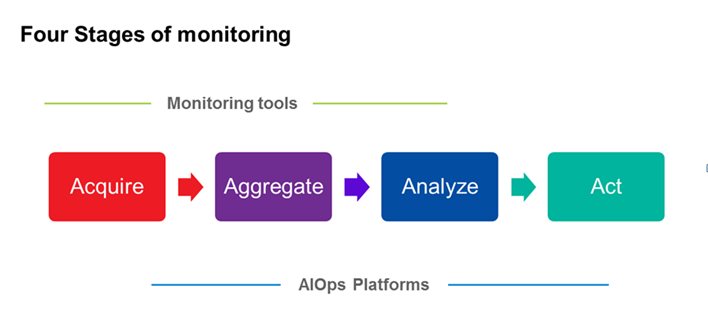This article discusses:
How AIOPs can play a crucial role in the increasingly complex IT management landscape
IT management has come far from the days of monolithic architectures. IT operations (ITOps) now involve dealing with increasingly distributed systems in virtualised and hybrid cloud environments coupled with exponential growth in data management requirements. These systems are further developing at a rapid pace and in doing so, becoming progressively more complex. A strategy to cope with this challenge is to infuse ITOps with the power of Artificial Intelligence (AI) and machine learning, thereby resulting in Artificial Intelligence for IT Operations (AIOps).
In the current environment of increasing competition from traditional and non-traditional competitors and the resulting need for faster product iterations, ITOps are tested with the dual challenge of managing increasing complexity while reducing costs. IT infrastructure and applications are generating an increasing variety of data at an unparalleled pace. This is further complicated by the need to contextualise the data per business requirements. Existing monitoring tools won’t be capable of managing this complexity. Further, they are not equipped to effectively cut across different types of data and metrics, including; sentiment data, transaction data, sensor data and logs. With the rise in new digital businesses and the evolution of existing business as digital enterprises, the speed with which IT needs to act is also increasing.
So, IT managers have started supporting IT operations tools with machine learning to enable monitoring or observation of IT infrastructure, or application behaviour. As per Gartner, there are four stages of monitoring – data acquisition, aggregation, analysis and action. While the current tools look to cater to the first three stages, technology needs to start focusing and enabling the action stage. This is where AIOps come in to enable a “right shift” from just monitoring tools to AIOps platforms (see figure).

Ideally, ITOps tools should be able to gather data with minimal noise, aggregate data from multiple data sources, analyse the data to detect any anomaly or error and trigger an action to resolve it. The existing monitoring tools excel at data acquisition and aggregation, but fall short when it comes to using this unified view to detect anomalies or determine causality across the infrastructure. AIOps platforms integrate AI with the existing ITOps tools to enhance IT operations and determine the best possible action to address the detected anomaly and trigger the action without human intervention. The next step is to proactively determine an anomaly and trigger an action to avoid the anomaly altogether.
Traditional monitoring tools need not fear obsolescence yet. While AIOps will be leveraged to provide a unified view and enhance IT operations, there is still the need for area specific analysis. AIOps extract information from the captured data to detect anomalies in the data structure itself and existing monitoring tools fit the data into pre-determined data models. Thus, traditional monitoring tools will continue to exist and they will forward the gathered information to AIOps platforms for a coherent view.
The rise of AIOps will definitely complement and supplement existing ITOps tools to enhance operations, improve monitoring and enable proactive action to ensure business continuity. But, how do we effect a smooth integration of AIOps? What are the best use cases to start with? How will these tools evolve? How to choose the best AIOps platforms to cater to your specific requirements? In subsequent posts, we will try to answer those questions and more.
Harshil Patel
Open Source Marketing, Wipro
Harshil works on end-to-end marketing initiatives for Open source practice at Wipro. With a focus on creating differentiated brand positioning and gaining ecosystem mind-share, he leverages marketing levers, such as integrated marketing campaigns, social media / digital marketing, thought leadership, influencer marketing and account based marketing to deliver business impact and growth. An IIM alum, he is fond of travelling, reading and movies. You can connect with him over LinkedIn to know more.